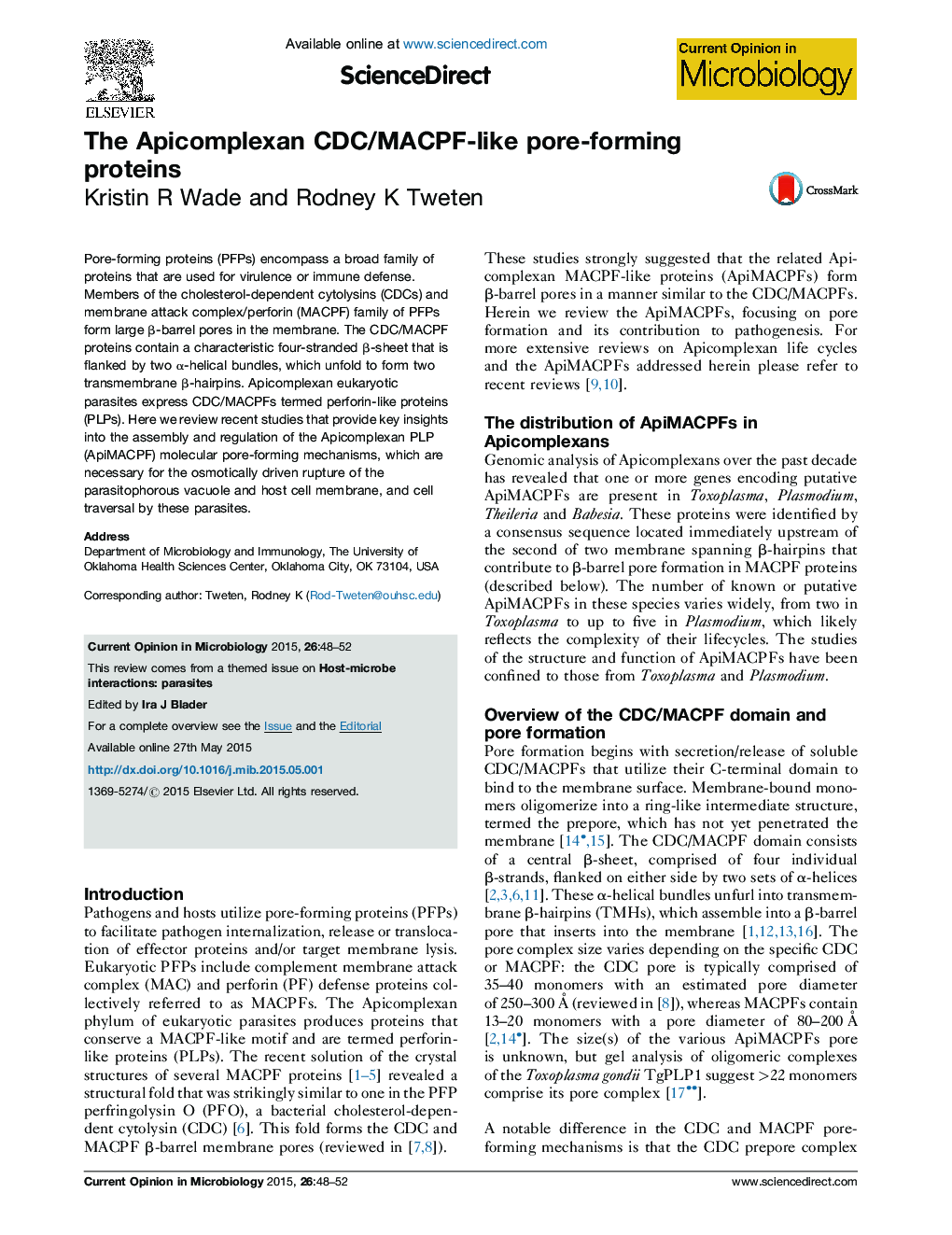| Article ID | Journal | Published Year | Pages | File Type |
|---|---|---|---|---|
| 3399033 | Current Opinion in Microbiology | 2015 | 5 Pages |
Abstract
Pore-forming proteins (PFPs) encompass a broad family of proteins that are used for virulence or immune defense. Members of the cholesterol-dependent cytolysins (CDCs) and membrane attack complex/perforin (MACPF) family of PFPs form large β-barrel pores in the membrane. The CDC/MACPF proteins contain a characteristic four-stranded β-sheet that is flanked by two α-helical bundles, which unfold to form two transmembrane β-hairpins. Apicomplexan eukaryotic parasites express CDC/MACPFs termed perforin-like proteins (PLPs). Here we review recent studies that provide key insights into the assembly and regulation of the Apicomplexan PLP (ApiMACPF) molecular pore-forming mechanisms, which are necessary for the osmotically driven rupture of the parasitophorous vacuole and host cell membrane, and cell traversal by these parasites.
Related Topics
Life Sciences
Immunology and Microbiology
Microbiology
Authors
Kristin R Wade, Rodney K Tweten,
